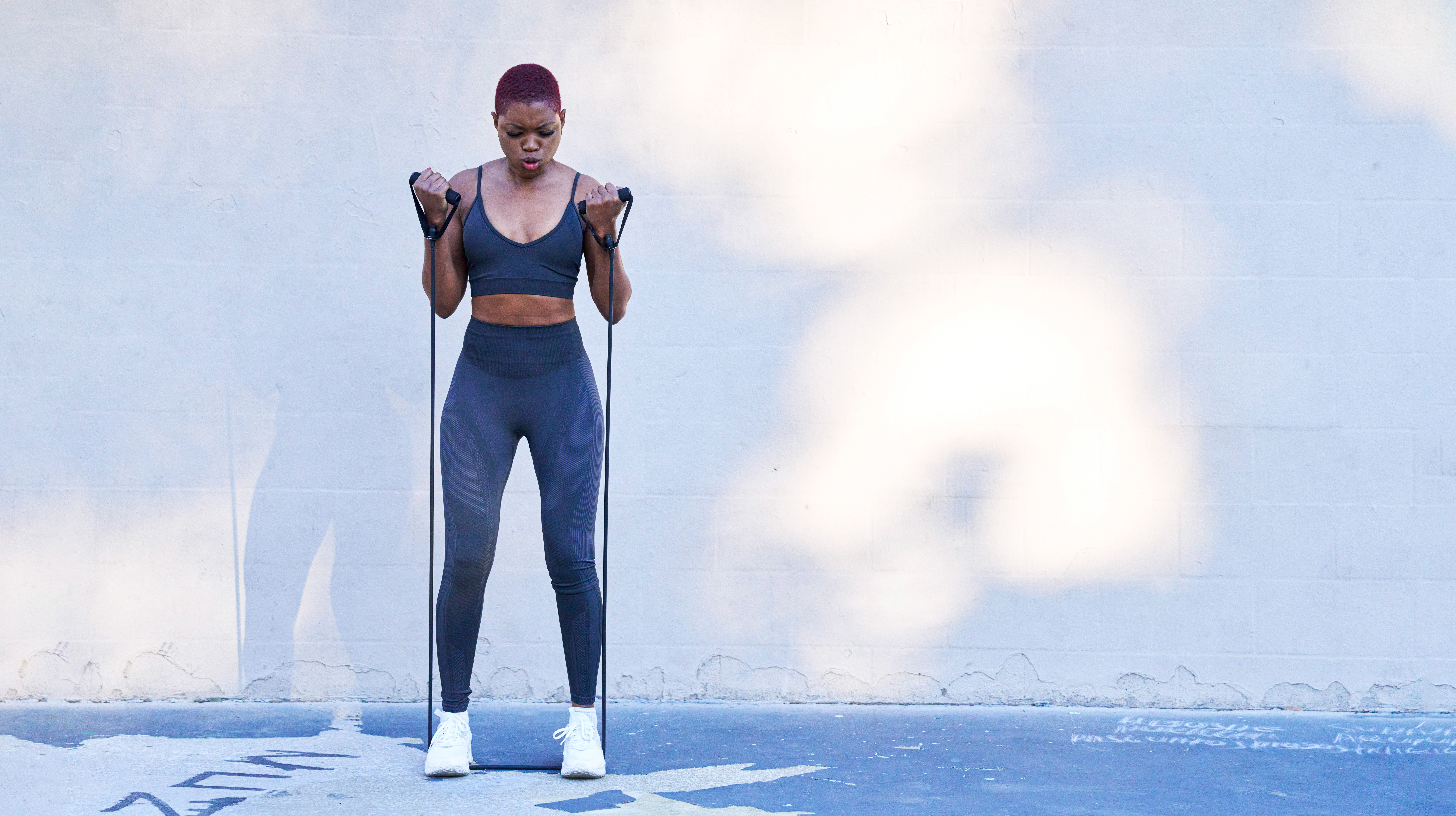I swapped my weights for resistance bands for a month—here’s why you should, too
Using resistance bands improved my core strength, range of motion and was gentler on my joints


Last month as I was packing for my vacation, I dug out some resistance bands. Lighter and more compact than free weights, they are a great bit of home fitness equipment you can pack in your luggage.
I was so surprised by how good they were for working out on holiday that I swapped them for my usual weights when I got home. Here’s why they're my new go-to training tool.
Outdoxy resistance bands set: $24.99 at Amazon
Want to invest in my favorite workout equipment? This set of five bands comes with various resistance levels and a lifetime warranty. They're long looped bands, which means they're useful for adding weight to moves like squats and deadlifts and can help you master your first pull-up.
My core got stronger
One of the best things about resistance bands is how good they are for core strength and stabilization. Your core has to hold steady against the instability of the band, which provides a continuous challenge. The result? A more challenging and dynamic workout that hits multiple muscle groups at once, particularly the muscles in your trunk.
Training this area is essential for posture, balance, functional movement and—most critically for me—to be strong enough to carry my young children to bed when they have fallen asleep and are a dead weight!
I improved my range of motion and mobility
As well as being excellent strength training companions, resistance bands are also useful for stretching. They offer controlled tension, which helps muscles lengthen gradually. This means you can ease into poses, supporting your muscles throughout a move.
After a month of using resistance bands, my range of motion improved and I found it much easier to stretch into different positions. In particular, practicing leg extensions with a band anchored to a chair helped gradually improve my hip mobility.
The workouts were gentler on my joints
Now that I'm in my mid-forties I’m more at risk of developing osteoporosis during perimenopause, so I always try to do joint-friendly and bone-boosting workouts. That is where bands come into their own. They are gentle on the joints and research by Harvard Medical School has shown they can fire bone-forming cells into action, improving strength and density.
Start your week with achievable workout ideas, health tips and wellbeing advice in your inbox.
I also found that any post-workout DOMS I had were often milder than I got with a weights workout, too.
Maddy Biddulph is a journalist specializing in fitness, health and wellbeing content, with 26 years in consumer media working as a writer and editor for some of the bestselling newspapers, magazines and websites in the US and UK, including Marie Claire, The Sunday Times and Women’s Health UK.
She is a CIMPSA-certified PT and works one-on-one with clients, as well as running Circuits Club classes which mixes cardio and strength training and chair-based exercise classes for seniors.

